How to Divide Croton Plants
In late summer and early fall, the home improvement stores always have these beautiful bushy Crotons. I ended up getting one this year. I tend to prefer my plants to be a little more tree-like and less bushy, so I decided to divide this Croton. I'll walk you through my process for dividing croton plants and why I thought it was a good idea.
Back to topCroton Care
Crotons have a reputation for being hard to care for. I have an old Gold Dust Croton that I have had for years, and I have personally found it to be one of the easier plants to care for. It may just be well suited for my environment though. I think the toughest thing for people is that Crotons like a decent amount of light. I have two big south-facing windows. Crotons may become leggy with a lack of light or the foliage, one of its defining features may be less colorful.
| Light Needs | Watering Needs | Soil Needs | Fertilizing Needs |
| Bright indirect light. | Top inch should be dry before watering. | Well draining potting soil. | Every 2- 4 weeks during the growing season. |
Aside from light Crotons have pretty average watering and fertilizing needs. Some say they need a moist environment, but I have not found that to be the case. I do not provide extra humidity nor do I keep the soil particularly moist. Crotons are not particularly fast-growing plants, so be patient. My Gold Dust Croton flowers almost all summer though, which is nice, but the flowers are very small. Crotons are toxic to pets, so keep them out of reach.
Back to topShould I Divide My Croton
There could be any number of reasons to divide your Croton. I'll talk about a couple here. I mentioned earlier how bushy the Crotons are at the home improvement stores. They are so crowded that there is low airflow through the plant. This can be bad for several reasons. Low airflow can make a plant more susceptible to pests and disease, both of which are very difficult to battle once it has happened. As you can see below, while beautiful, there's going to be very little airflow through this plant.
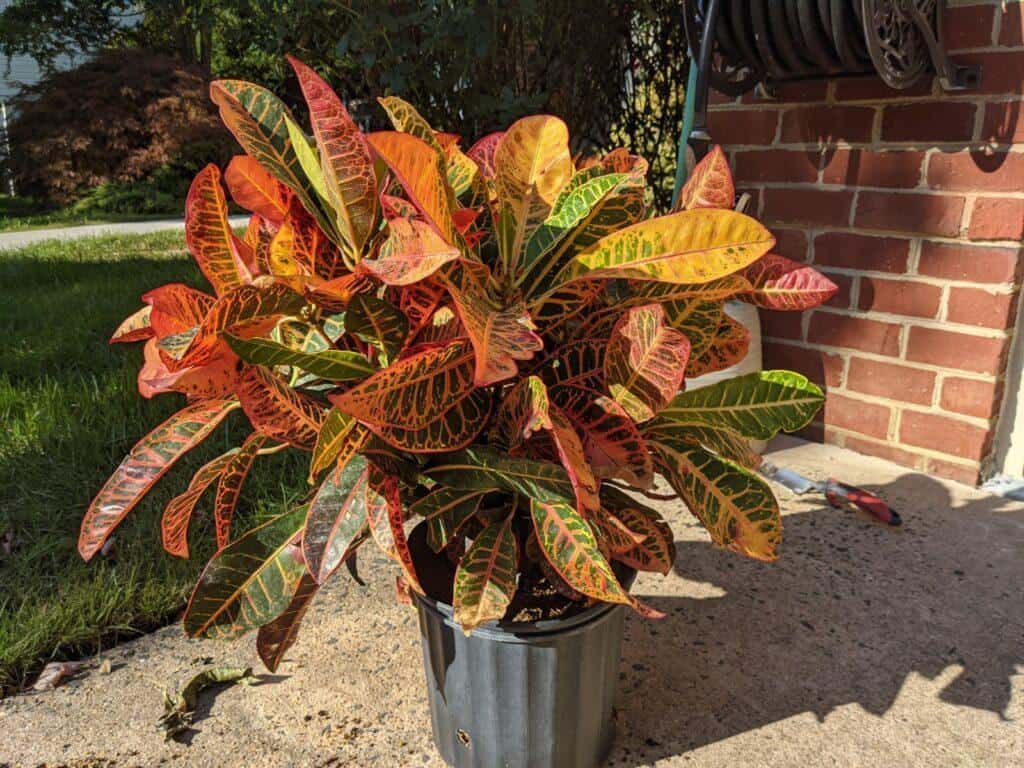
I talked about dividing to promote airflow, which is important, but another benefit to dividing is more plants. That can be a good or a bad thing. It's good because plant people like more plants, but bad because plant people run out of space for more plants. You do want to make sure that you have some good trunks worth dividing. This Croton had three very good sized trunks. The biggest was probably the thickness of a Sharpe and the smallest still thicker than a pencil.
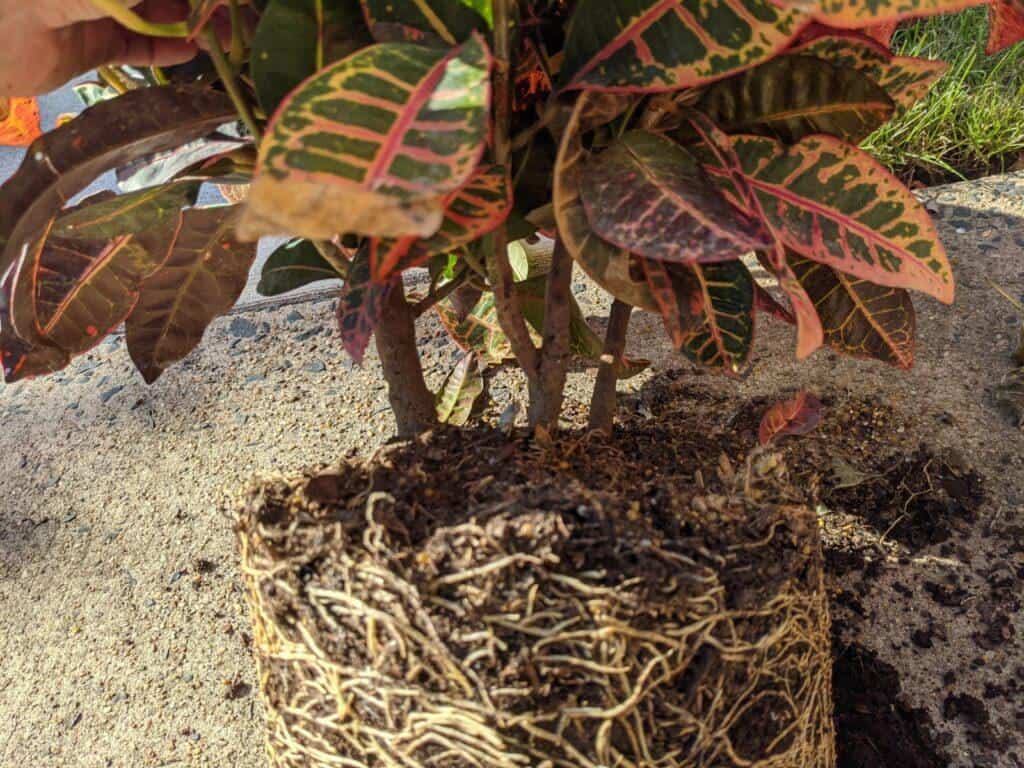
Finally, there's nothing wrong with dividing your croton for aesthetic purposes. I like the tree look with a single trunk rather than the bushy multiple trunk look. You really don't need any other reason than that. You do need to have the right mindset though. Dividing plants can cause significant stress which can lead to leaf drop or worse one or more of your divided plants doesn't survive. I do not recommend you do this for the first time on your most prized plant.
Back to topHow to Divide a Croton
Preparation
In preparation, it's good to have a big clean surface. Don't do this somewhere you don't want to get dirty though, there will be a lot of dirty. You should have your new pots ready for the Crotons you will be dividing. Make sure to pick pots that are appropriately sized. Pots that are too big may lead to the soil holding too much moisture which will be bad for the stressed roots. I say err on the side of too small, try to pick something that's maybe an inch larger than the root ball of the divided Croton. You will also want a sharp sterile knife. And I personally like to wear gloves for this because removing soil from the root mass is very messy and then I'm scraping dirt from my nails for a day.
Croton Soil Mix
Next, you need to prepare your Croton soil mix. You will need enough to fill however many new pots you will be planting in. In my case, I'm dividing three Croton trunks and planting them separately. There are potting mixes made specifically or Crotons. I personally just use the potting soil and perlite that I use for everything else. I add perlite to the potting soil in a 1:3 ratio.
Begin Dividing Your Croton
The next thing to do is just go for it. As you saw above, the Croton I am dividing has three trunks. It also had tons of healthy roots that really filled out the original pot. I begin by massaging the soil out of the root ball. Take your time and be gentle the less agitation to the roots the less stressed your plants will end up. Below is a picture of some progress removing the soil from the roots.
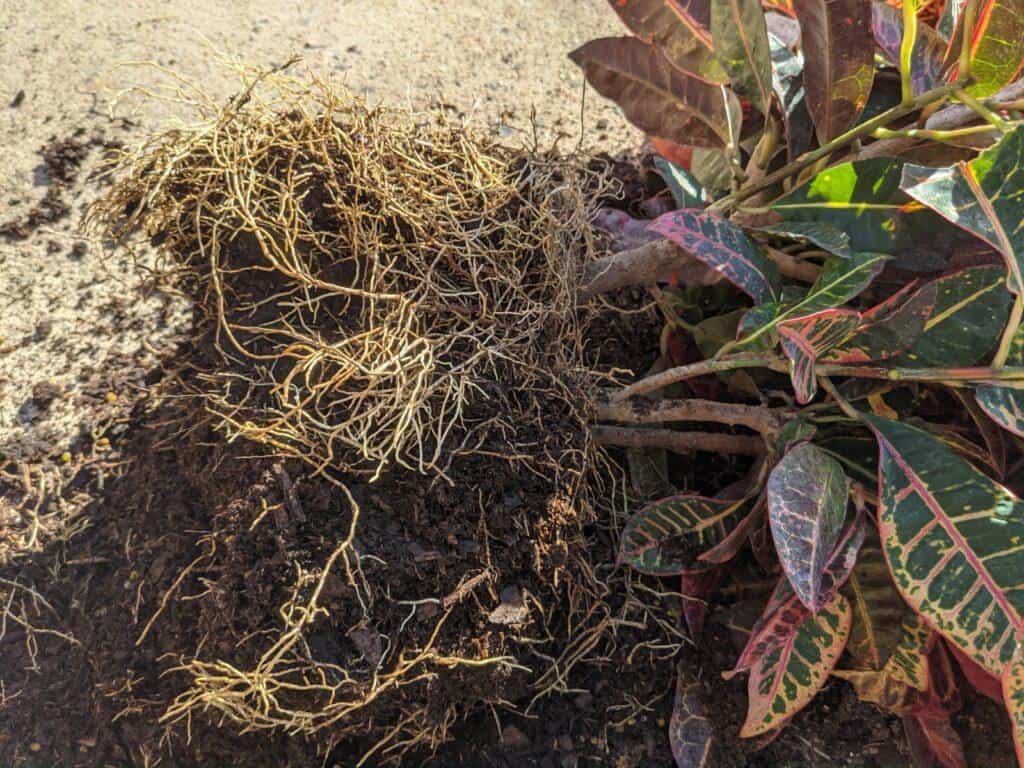
At some point, you will have removed most of the soil from the outside of the rootball. As you move toward the center, it will get more and more difficult to remove soil as you get closer and closer to the middle. That's when you can reach for the knife. Again, make sure it's sharp and sterile, both help reduce the risk of undue damage and disease. Do your best to find your trunks in the soil and make cuts so that the roots are evenly distributed among the trunks. Make clean decisive cuts, don't saw back and forth.
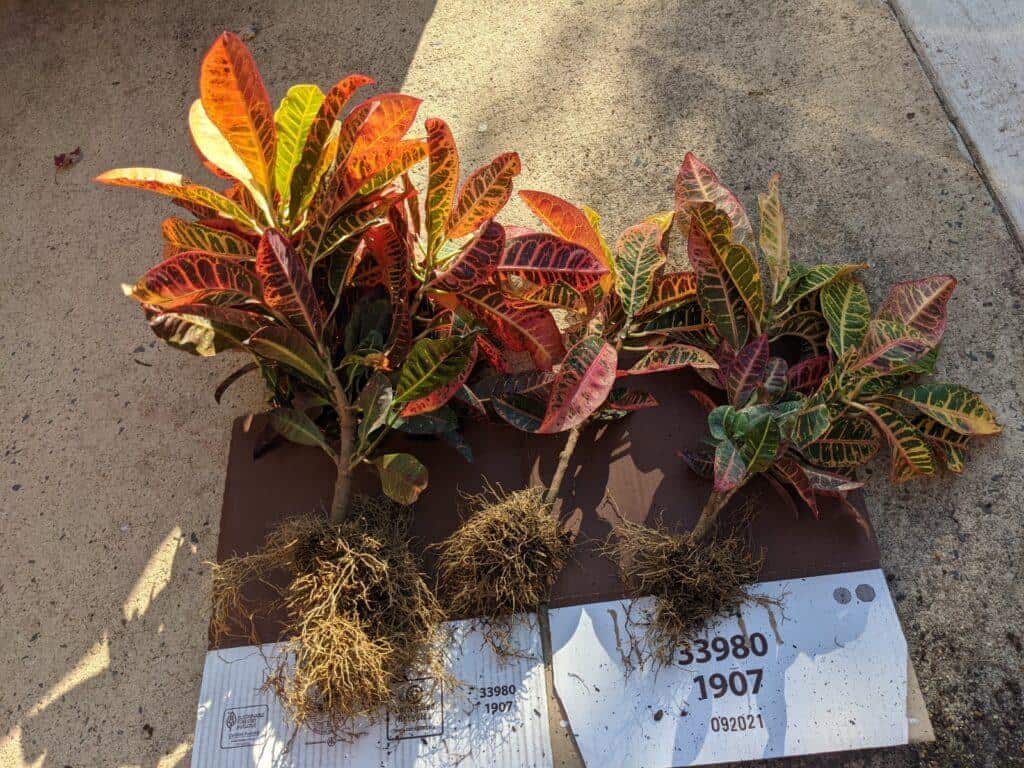
Once you have cut the roots you should now have divided your Croton plants. See mine above. Notice that the root balls are generally proportional to the trunk thickness. You have to make sure you have the root support for your new plants.
Pot Up Your Divided Crotons
Prep your pots with some of the potting soil you mixed up for your new Crotons. Fill the base to the height where you want the root ball to rest. This can be trickier for divided plants because the plants are bare root. It can also be tricky to pot your bare root plants and keep them upright until the roots have a chance to anchor into the soil. I always keep some 18 inch dowels on hand for staking my houseplants. These are very useful to stabilize your newly divided Crotons until the roots get their grip.
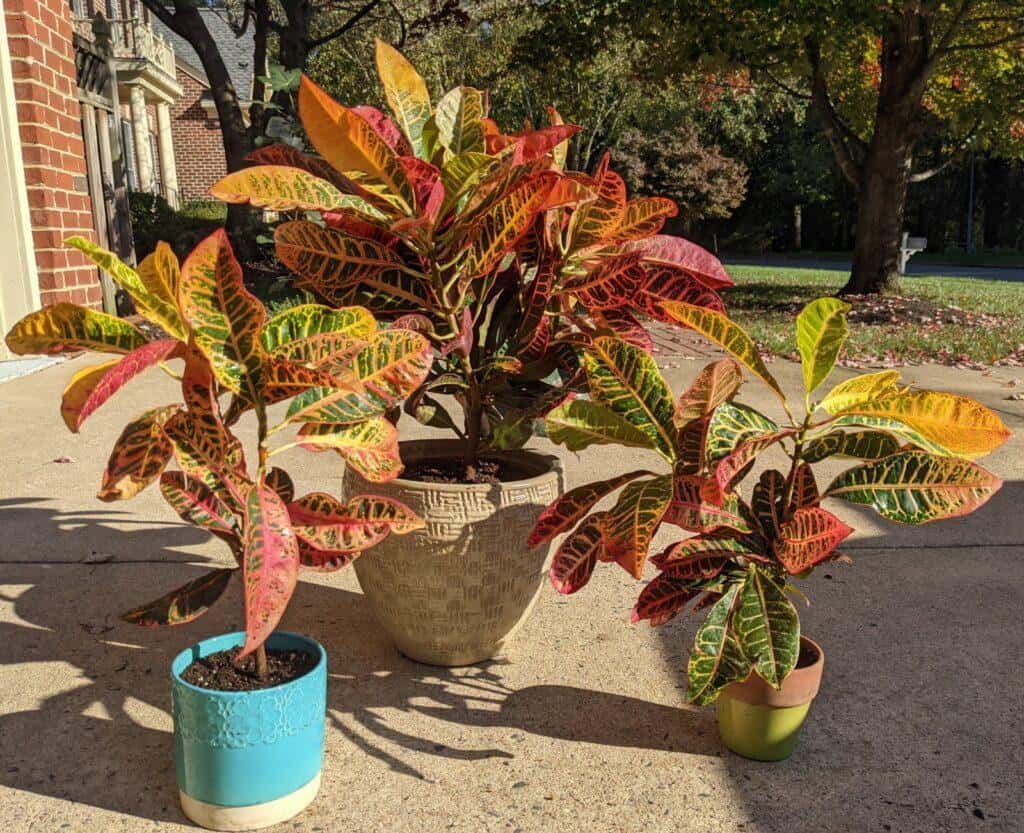
After Care
First, just don't panic. Your Crotons might get droopy or drop some leaves. They just experienced a big shock and that is not abnormal. What you don't want o to do is overwater or change the lighting situation your Crotons are used to. It's ideal to wait a day or two to water, and when you do start sparingly. The roots got the biggest shock and they need to recover before they start really absorbing water.
Good luck! Have you divided Crotons before? Share your story in the comments.
Back to top
Add new comment